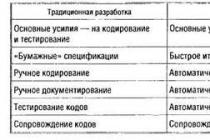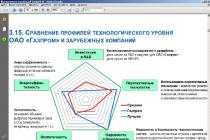The regulation of the procedure for calculating and paying salaries in a company can be carried out not only on the basis of current legislation, but also in the local acts of the company or entrepreneur specifying its norms. One of these documents is the regulation on the remuneration of employees. This act is not necessarily developed, but it is desirable that it still exist.
They reflect the remuneration system used in the business entity, which makes up the salary - additional payments, bonuses, allowances.
With the help of this act, the salary of each employee is determined. For example, you can not describe what bonuses are due to a person working at an enterprise, but make a reference to the norms of the Regulation on OT.
This act adapts the current norms of legislation to the working conditions existing in the company, with the help of them the peculiarity of payment for the activities of each enterprise is taken into account. This eliminates or helps to resolve many disputes with employees of the company.
Attention! During inspections by regulatory authorities, the inspector often requests this document in order to understand what kind of remuneration system should be, and compares the provisions of this document with the existing reality.
Who should make up the position
Local acts on the calculation and payment of wages are necessary for business entities if they have labor contracts with employees.
The regulation on the remuneration of employees is not necessarily developed at the enterprise. This is primarily due to the fact that the issues considered in it can be reflected in other regulations at the enterprise -, etc.
Mandatory according to the Labor Code of the Russian Federation should be the very fact of concretization of the current norms of legislation to the specific conditions of the enterprise, since often the standards establish several options for action under certain conditions. This is especially important when regulating issues of remuneration for periods that differ from normal working conditions.
Therefore, in which act the rules for calculating wages will be reflected, it is decided by the management of the enterprise independently.
Attention! Combining regulations in one document is typical for small businesses. In practice, for example, often the Regulations on OT are combined with the rules governing the accrual of all types of bonuses. Then this document is called the Regulations on wages and bonuses for employees.
The larger the business entity, the more it has its own standards. At the same time, it is imperative to ensure that they are consistent, do not contradict each other. Many issues on the regulation of wages can be immediately considered in several provisions of the enterprise. If there is a discrepancy among them, this will lead to their invalidation.
Do you want to reduce the salary burden on the company's budget? Adjust the cost structure by dividing costs into two categories - mandatory and non-essential.
Dear readers! The article talks about typical ways to solve legal issues, but each case is individual. If you want to know how solve exactly your problem- contact a consultant:
APPLICATIONS AND CALLS ARE ACCEPTED 24/7 and 7 days a week.
It's fast and FOR FREE!
Make the necessary changes to the relevant local regulation or adopt a new one. Familiarize subordinates with the changes under the signature.
What is this document?
The regulation on the remuneration of employees is an internal document of the organization that determines the rules for assigning remuneration for work, taking into account state guarantees and the company's own capabilities.
In particular, the size, basis, procedure and criteria for material incentives for employees are established.
What is needed?
According to the Labor Code of the Russian Federation, remuneration for the performance of immediate duties is assigned to a subordinate by an employment contract in accordance with the LNA in force in this organization.
Such documents include an act that includes the conditions for financial incentives:
- tariff rates;
- salaries;
- compensatory surcharges and allowances, including for the performance of functions in an environment that differs from the norm;
- reward systems.
If the company has adopted the LNA, which determines the nuances of payroll, there is no need to directly indicate them in the employment contract.
It is enough to make a reference to the relevant document.
In addition, the procedure for making changes is quite simple and does not require a conclusion with the employee.
Mandatory or not?
The composition of the regulation on OT is directly defined in part 2. However, since 2017, small businesses belonging to the category of micro-enterprises have the right to completely or partially refuse to accept LNA, which regulate the totality of relationships with subordinates.
At the same time, contracts with employees must be concluded in a single form approved by law.
Normative base
Chapter 1 of the Labor Code of the Russian Federation delineates the powers of the authorities in the field of labor relations.
Federal acts establish:
- the direction of state policy (Article 6 of the Labor Code of the Russian Federation);
- legal regulation- procedures, criteria, standards aimed at preserving the life and health of workers - are prescribed in;
- the level of rights, freedoms and guarantees provided by the state, such as the minimum amount of OT (determined in accordance with), the duration of paid rest (indicated in), working week (depending on the category of employee);
- the procedure for concluding, amending, terminating individual and collective labor contracts, the composition of their mandatory elements is indicated by articles 41, 42, 44 of the Labor Code of the Russian Federation, and detailed by various departments.
The allowances financed from the local budget are established by the self-government bodies. LNA adopted by employers specify the procedure for calculating and the amount of payments to certain groups of employees.
The subject of clarification is not only the norms of legislation, but also the requirements established by legal documents and collective agreements.
Ch. 58 of the Labor Code of the Russian Federation and allows for the adoption of local acts coordinated with the representative body of employees.
Below is a list of tasks that are solved in this way:
- establishment of part-time work regime for up to six months;
- dismissal of a union member;
- involvement in the implementation of functions overtime in cases not provided for by the code;
- splitting the period allotted for the performance of immediate duties;
- determination of the procedure for paying holidays for subordinates who do not receive a salary and were not involved in work during the specified period;
- conditions for granting additional holidays in excess of existing standards;
- approval of instructions on labor protection;
- application of the shift method;
- the amount of compensation for travel expenses to a place of rest or treatment for persons performing duties in the regions of the Far North and equivalent areas.
Local regulations adopted without the consent of employees' representatives in the prescribed manner, or worsening the position of subordinates in comparison with the current legislation, should not be applied.
The local act comes into force from the moment of adoption or from the specified date, and terminates due to the expiration or cancellation.
Pay Regulations 2020
The legislation does not oblige the heads of the organization to issue a separate LNA, which regulates the procedure for remuneration of employees for the performance of functions.
The purpose of the approval of such a document, as a rule, is:
- concretization of the form and system of OT;
- establishing criteria for the calculation of salaries in an increased amount;
- strengthening the material interest of subordinates.
Who is developing?
The regulation on labor protection is drawn up in accordance with the requirements of regulatory acts of the federal, industry and departmental levels. The terms of the tariff agreement, the collective agreement and internal documents of the company are taken into account.
At the same time, the established rules should not contradict each other.
LNA is developed by the administration of the economic entity. The approval process should take into account the views of the employees' representative body.
The Labor Code of the Russian Federation contains a list of situations in which it is mandatory to enlist the support of employees:
- compiling a list of positions with an irregular period of execution of direct functions ();
- preparation of a shift schedule ();
- establishment of a wage system ();
- increase in salaries for persons performing work in non-standard conditions ();
- form assertion();
- determination of the amount of remuneration for the performance of functions on weekends, holidays, night time ();
- formation of internal regulations and a system of labor rationing ( , ).
Should it be combined with the provision on bonuses?
The rules for additional material incentives for personnel based on the results of the performance of duties can be included in one of the sections of the local regulatory act or prepared as a separate document.
The latter is useful in the following situations:
- the conditions and amounts of bonuses for different groups of subordinates differ significantly;
- the number of categories of employees in the company is quite large.
In any case, it is necessary to determine the following indicators of additional incentives:
- upper and lower border;
- conditions for making payments and reducing its size;
- periodicity.
Main sections and structure
When developing a regulation on remuneration, not only the composition of the elements themselves is important, but also the order in which they are included in the LNA.
So an example document composition might look like this:
| General provisions | The acts that became the basis, the system of remuneration, the terms of payments, the establishment of allowances for different categories, the regulation of labor. |
| Main part | Official salaries, the procedure for their increase and maximum sizes, tariff rates and piece rates. |
| Payment for the implementation of functions in non-standard conditions | Additional reward for working weekends, nights or overtime. |
| Payment for the performance of duties of another employee | Remuneration for internal or external part-time employment, replacement, combination of different positions or professions, expansion of service areas. |
| Bonus | Financial incentives in accordance with the results. |
| Dividend payment | Distribution of amounts of income between the participants of the company. |
Mandatory moments
When adjusting the provisions of OT, it should be borne in mind that some costs belong to the group of irrevocable expenses (part 4 of article 8 of the Labor Code of the Russian Federation):
- allowances of a compensatory nature (fulfillment of established indicators, additional tasks, work in conditions that deviate from the norm);
- holiday guarantees for persons under the age of majority performing duties in the Far North or hazardous industries.
Applications
Sometimes the LNA accepted in the company has to be supplemented. For example, the minimum wage has changed (82-FZ dated 06/19/2000) and, in connection with this, it is necessary to establish a compensatory allowance up to the level of the minimum wage.
It will be necessary to develop a regulation according to which it will be calculated automatically.
This is much more convenient than amending the employment contract.
Since there is no mandatory form of the wage provision, it is developed for the individual needs of the organization. Therefore, the maximum number of applications, their presence or absence is not regulated.
Sample (example)
The position form includes the following information:
- the name and details of the organization;
- link to regulatory documents;
- types of payments;
- procedure for remuneration for work;
- frequency of accruals;
- retention;
- calculation of severance;
- conditions for issuing salaries in the event of the death of an employee;
- the amount of payment for non-fulfillment of official duties, simple;
- tariff rate;
- reward system;
- the volume and nature of the established allowances;
- liability for delayed wages;
- notice to the employer.
The document must be certified by the signature of the head and the seal.
Typical
Special requirements for a local act reflecting the system of material incentives for personnel have not been established.
Each company decides for itself what obligations to employees need to be fixed. The main condition is compliance with the Labor Code of the Russian Federation.
For municipal employees
- collective agreements;
- regulatory documents ();
- acts of local governments.
Preservation of the unity of positions and professions is ensured by the use of a special tariff and qualification guide.
For a municipal government agency
The OT system and the form of the provision are established by the department that performs the functions of the founder of the legal entity, and is mandatory ().
For a budget institution
If a non-profit organization was created by the Russian Federation or its subject, then when developing a LNA regarding material incentives for employees, it must take into account the recommendations of higher structures.
For IP
Ch. 48.1 of the Labor Code of the Russian Federation gives individual entrepreneurs the right to draw up and apply a provision on remuneration or conclude employment contracts with personnel in a single form approved by law.
medical workers
FMBA has prepared a form of a local act regulating the remuneration of employees of healthcare organizations.
The document explains:
- the procedure and conditions for paying salaries to managers and personnel of various levels;
- establishment of allowances of stimulating and compensatory character;
- division into qualification groups;
- application of multipliers.
In OOO
When working on a rotational basis
In the conditions of the summarized accounting of the period of performance of labor functions, the provisions of Ch. 47 of the Labor Code of the Russian Federation, it is allowed to apply both time-based and piecework wage systems.
The bonus is accrued without taking into account the days of rest between shifts, which are compensated in the amount of the tariff rate, to which the regional coefficient and percentage allowance are not applied.
The nuances of drafting and design
To make changes to a local act, depending on the scale, you can adopt a new document or add provisions to the current one.
The remuneration system is approved by the order of the director and agreed with the representatives of the employees. The staff gets acquainted with the innovations under the signature.
Do I need to add indexation points?
In order to avoid the claims of the labor inspector, a company that is not related to the public sector, it is necessary to register a salary increase order in any of the documents listed below:
- collective agreement;
- terms of remuneration;
- local regulation.
With a piece system OT
The following provisions should be added to the LNA:
- types of jobs;
- salary amount;
- calculation of the part of earnings dependent on the result;
- basis for the award.
By separate division
To consolidate the features of the OT of the branch, changes are made to the general local act of the company.
For part-timers
In this case, wages are paid:
- in proportion to the time of implementation of the functions;
- depending on production.
With hourly pay
In the LNA, you must specify:
- salary;
- the procedure for calculating earnings;
- conditions of additional encouragement and;
- payment for hours on holidays, weekends, at night;
- paydays;
- probation;
- social guarantees.
Do I need to flash?
The fact of familiarization with the LNA is confirmed by the signature of the employee on a special sheet. Then, together with the specified paper, the provision is numbered, stapled and certified by an authorized person.
Basic Mistakes
Today, many labor disputes are being considered in the courts. Moreover, many of them are associated with violations of the norms established by law.
For example, the conditions for the mandatory minimum payment:
Document Approval
The regulation on labor protection is drawn up in an arbitrary form, taking into account the opinion of the representative body of employees, if it exists.
Who claims?
The new LNA is sanctioned by the order of the head of the company.
Order
There are several stages in the document development process:
- definition of the range of issues;
- setting milestones and deadlines;
- creation of a working group;
- project approval.
Approval order (sample)
Since there is no unified form, the form can be prepared independently.
In this case, the order must reflect:
- date of entry into force;
- procedure and terms of notification;
- Name of responsible officials.
Familiarization of employees
New conditions are brought to the attention of all employees and are certified by the personal signature of each, affixed to the attached sheet or in a special journal.
Validity
A local act may become invalid due to the following circumstances:
- the end of the set period;
- cancellation;
- acceptance of a document with a higher level of assurance.
Shelf life
For such local acts as the regulation of the OT, a constant period of detention is established.
If the company is liquidated, the head is obliged to transfer the papers to the Archival Fund of the Russian Federation.
In what cases and to whom may an extract be required?
An employee can apply for a copy of a local act in a variety of situations. For example, if you plan to apply for a pension or challenge the actions of the employer in court.
Based on the context, you need to determine the amount of information and give out that part of the document that is directly related to this subject.
Making changes and additions
All amendments are added in the same order in which the regulation was originally developed and approved.
How to deposit?
Prepare the necessary adjustments, coordinate them with the representatives of the team, familiarize all interested parties with the innovations.
How often to update? Is an annual review required?
The employer has the right to make changes to the LNA at its discretion, observing the rules established by law (part 4 of article 8 of the Labor Code of the Russian Federation).
A model regulation on remuneration is an official document of an organization that describes all the rules for calculating salaries and additional payments, for example, bonuses and material assistance.
Where are the rules
General requirements and the procedure for remuneration for the work of employees of budgetary organizations are determined by Articles 135 and 144 of the Labor Code of the Russian Federation.
If the enterprise is financed by a constituent entity of the Russian Federation, then the payment for the activities of employees is additionally regulated by laws and other legal acts adopted by the authorities of such a constituent entity. We should not forget about the supremacy of federal legislation over local decisions.
Regardless of the specifics of the activities of a state organization, specific conditions for remuneration are provided for by a collective agreement or a local regulatory act. The most universal document is the regulation on wages and bonuses for employees 2020.
Why is it necessary
The document is being developed for transparency and understanding by the parties of the procedure for payments and the rules according to which stimulating financial mechanisms operate. Taking into account the peculiarities of the organizational and legal form of the institution, the procedure for financing and controlling costs, the regulation on remuneration contains a detailed description of the actions of the employer and employee in terms of payments.
A properly executed and drawn up regulation on remuneration will enable the employer to recognize the costs of remuneration of employees when taking into account taxes without much difficulty. The fact is that the taxpayer has the right to reduce the amount of income received by the amount of expenses that he made. Accordingly, the calculation of profit will decrease and, as a result, the amount of tax payable will be less (Article 252 of the Tax Code of the Russian Federation).
Tax Code of the Russian Federation in Art. 255 refers to the list of expenses that are established for wages, such payments:
- any amounts in cash or in any other form of accruals;
- incentive bonuses for work;
- compensation related to modes and working conditions;
- bonus accruals for work;
- incentives for work;
- declared costs for the maintenance of employees.
These accruals must be explicitly provided for in collective and (or) labor agreements in accordance with the current legislation of the Russian Federation.
Who is developing
The head of the organization is developing an example of a provision on remuneration. The participation of the manager in the development process will make it possible to quite simply determine the most significant positions for monitoring, evaluating the work of employees, and their motivation. In addition, the manager determines the most important areas of activity that are subject to control.
The manager determines the responsible person who will generate the document. In the process of development, the provision should receive an expert assessment of a number of employees of the enterprise, for example, those who are related to the calculation and payment of wages, compliance with the norms established by current legislation. Usually the legal, personnel and accounting departments of the organization are involved in the process.
With the cooperation of several departments involved in the issue, a provision is created that helps to prevent disputes related to the calculation and payment of salaries.
What sections does
- General rules. This section of the document includes information about the persons for whom it is intended. A description of the method of formation of the wage fund is given and the legal framework is indicated.
- Pay system. It provides for specifying the characteristics of the system according to which remuneration is calculated. We are talking about non-profit organizations, so the information about the norms of labor duties in this section is based on the requirements of the law. The description of the system includes the official salary or tariff rate, the rules for increasing wages, additional payments and allowances and other payments, if any.
- Material aid. The legislation allows fixing the possibility and conditions in a separate one, but it is recommended that this information be included in the regulation on the remuneration system. In this case, the process and fulfillment of the requirements will be optimized. It is necessary to provide for cases when an employee has the right to assistance from a budgetary enterprise, to determine the timing, procedure for registration and direct payment.
- Order, place and terms of payment of wages. In fact, it is an extended description of the second section, taking into account the work duties of the employee. The section contains detailed information about the basis, type of currency and frequency of payments. It is necessary to indicate the methods of receipt, indexation of salaries, the procedure for its increase and other points that are related to this process.
How to make a position
When developing a sample salary regulation, the employer needs to take into account the direction of the organization. It is recommended to include chapters:
- General provisions.
- The procedure and terms of payment for the work of employees.
- The procedure and terms of payment for the work of managers, their deputies, chief accountants.
- Other questions about payment or final provisions.
Litvinova Natalya Viktorovna, Head of Human Resources at NEOLANT JSC:
As grounds for the appointment of one-time bonuses related to work and included in the remuneration system, in the Regulation on remuneration, indicate the following, reflecting various areas of activity of employees: participation in the implementation of the project, project stage, successful completion of work on the project; creation and (or) implementation of norms, and (or) systems, and (or) technologies, and (or) algorithms, and (or) methods, and (or) forms, tools that help optimize work processes, reduce work costs, increase productivity and (or) labor efficiency; development or participation in the development of long-term plans, strategies for the development of the company's activities, areas of work, products and services; search for counterparties and successful conclusion of contracts, agreements; conducting analytical studies of the state, processes of the company, the external environment in order to optimize activities, business development; organization and (or) participation in the preparation and (or) holding of conferences and (or) seminars, other, including corporate, events; preparation of quarterly and annual reports (accounting, financial, etc.); ensuring cash and financial discipline; successful handling of claims and lawsuits; providing society with labor resources; passing audits or inspections of state bodies. In the Regulations on remuneration, it is necessary to establish a possible interval for the size of the bonus, for example, from 10% to 100% of the employee's salary, or to establish fixed bonuses on separate grounds. The term of appointment and payment of a one-time bonus, as well as all payments included in the company's remuneration system, must be indicated. For example, indicate that the bonus is assigned on the date of payment of wages set in the company as soon as possible after the issuance of the bonus order. It should be remembered that Article 57 of the Labor Code of the Russian Federation establishes that the conditions of remuneration are specified in the employment contracts of employees, including the possibility of paying bonuses if they are included in the remuneration system established by the company's local regulatory act.
Chapter "General Provisions"
This part includes:
- preamble (as a sample, use Decree No. 583 of 08/05/2008, the current acts of the Ministry of Health in the field of wages;
- a description (of a general nature) of the system of payment for work used in the organization, its main elements;
- a description (briefly) of the payment system that is used for certain groups of workers.
Chapter "Procedure and conditions of remuneration"
The chapter contains sections describing:
- basic terms of payment for work;
- compensation payments;
- incentive payments;
- terms of payment for the work of certain groups of workers.
“Basic conditions for remuneration for work” is a part that includes the algorithm for applying and the amount of minimum wages (rates) of employees in accordance with:
- with the distribution of their positions by professional qualification groups (PCG);
- with increasing coefficients to the salary depending on the position.
"Basic wage conditions" contain information on the recommended amounts of coefficients used to increase the minimum wages for the relevant PKG.
The increase factor is determined taking into account:
- employee's professional level;
- the complexity and importance of the work;
- level of independence and responsibility;
- length of service in the organization.
"Compensation payments" - the list of types of compensation is based on information from the Order of the Ministry of Health of December 29, 2007 No. 822. Heads of institutions should take measures to conduct a special assessment of the working conditions of employees. This is necessary to clarify the conditions that go beyond the limits of the norm, and to obtain a basis for calculating compensation.
This part also includes information about the payment algorithm in areas with uncomfortable climate conditions and those defined by the legislator, for example:
- about district coefficients;
- about bonuses for work in the Far North, etc.
The section "Incentive payments" contains a specific list and recommended amounts of incentive payments. The list is determined by the Order of the Ministry of Health of December 29, 2007 No. 818.
To encourage the employee, set the payment:
- according to the results of work for the reporting period;
- for the high quality of work;
- for especially important and urgent tasks;
- for the intensity of labor, night work.
The part “Terms of remuneration for the head of the institution, his deputies, chief accountant” includes the conditions for remuneration for the work of the head, the amounts and conditions for the provision of compensation and incentive payments.
For the head, his deputies and the chief accountant, a separate list of allowances must be provided. The boss should be rewarded according to the results and efficiency of the organization.
Chapter "Other questions of remuneration", or "Final provisions"
In this part, the features of payment for work in certain categories are determined. It also provides options for providing financial assistance to employees.
The document is not immutable. Any reward system in an organization is subject to change. Accordingly, the document defining the system of incentive payments is updated.
What to consider when developing
The regulation will help the employer to avoid problems and disputes of a judicial nature related to the procedure for calculating and paying monetary remuneration for work. Labor relations between employees and the administration of the enterprise will be regulated in the most optimal way. But according to the law, the provision on the remuneration of employees of budgetary institutions for 2020 in the organization is not mandatory.
Article 135 of the Labor Code of the Russian Federation determines that algorithms for calculating employees, other than the accepted tariff rate (salary), are included in a number of documents:
- contract of employment;
- PWTR;
- collective agreement;
- other document containing labor legal norms.
Documents regulating relations between an employer and an employee, including on employee remuneration, are adopted by the administration of the institution, taking into account the opinion of the representative body of employees (Article 372 of the Labor Code of the Russian Federation).
The amount of wages cannot be lower than the minimum threshold set by the Government. When developing regulations, it is necessary to take into account:
- Uniform recommendations on the establishment at the federal, regional and local levels of wage systems for employees of state and municipal institutions for 2020 (approved by the decision of the Russian tripartite commission for the regulation of social and labor relations of December 25, 2018, protocol No. 12).
- Decree of the Government of the Russian Federation of August 5, 2008 No. 583 “On the introduction of new wage systems for employees of federal budgetary and state institutions and federal state bodies and civilian personnel of military units, institutions and divisions of federal executive bodies, in which the law provides for military and equivalent service ...".
- Order of the Ministry of Health and Social Development of Russia dated December 29, 2007 No. 818 “On approval of the list of types of incentive payments in federal budgetary institutions and clarifications on the procedure for establishing incentive payments in federal budgetary institutions”.
- Order of the Ministry of Health and Social Development of Russia dated December 29, 2007 No. 822 “On approval of the list of types of compensation payments in federal budgetary institutions and clarifications on the procedure for establishing compensation payments in federal budgetary institutions”.
How to approve and change
The algorithm for adopting local acts in an institution is defined by the Labor Code of the Russian Federation. The provision is a local act of the employer and is put into effect by his administrative document, that is, by order.
The provision comes into effect:
- from the date it is approved by the employer;
- from the time specified in the order for its entry into force.
There is no special template for approving the provision, that is, the organization has the right to draw up a document in free form.
At the top of the document it should be mentioned:
- Business name;
- address and details.
After the word "Order" its serial number and date are assigned.
The line below indicates the name of the document, for example, "On approval of the regulation on remuneration."
The next - introductory part - includes a rationale for the reason for issuing the order.
After the word "I order" in the next line, you must state the main part of the document:
- on approval of the regulation;
- on its entry into force from a certain date;
- on determining the responsible person who will familiarize the employees with the document under signature;
- on the definition of a responsible person who will familiarize employees entering the institution with a document to be signed;
- on entrusting control over execution.
The order is signed by the head of the institution with a breakdown of the position and data.
The provision applies to all employees of the organization, regardless of where they perform labor functions.
Since the provision is a local act of the employer related to the labor functions of employees, people must be familiarized with its content under signature even before signing the labor agreement. In the future, the provision is stored as an annex to the local act.
If the employer changes the content of the provision, it is necessary to develop and issue a new local administrative document with the text of the amendment. Such an order should be familiarized with the staff of employees.
Sample order for approval
Sample change order
Ask questions, and we will supplement the article with answers and explanations!
Types of wage systems
There are the following payment systems:
- time-based;
- piecework;
- commission;
- floating salary system;
- chord.
On the basis of what indicators to calculate the salary of employees with these remuneration systems, the organization determines independently. There are no restrictions in the legislation on this matter.
Application of pay systems
An organization may apply more than one wage systems. For example, for some employees - piecework, and for others - time. There is no ban on the establishment of several wage systems in the Labor Code of the Russian Federation.
Documenting
The remuneration system chosen by the management of the organization must be fixed in a collective (labor) agreement or other local act (). So, for example, the wage system can be fixed in Regulations on wages, and a specific salary (tariff rate or salary) is prescribed in the employment contract.
The wage condition is mandatory for an employment contract (). However, it is not always possible to describe in the text of the employment contract all types of payments, their amounts, and the procedure for settlements. The employer has the right to adopt local regulations () and describe in them details regarding the procedure for assigning a particular payment.
Different elements of the remuneration system can be established in separate internal documents (regulations on bonuses, collective agreement, orders, instructions), but it is more convenient to describe all labor and social guarantees to employees in a single provision.
DOWNLOAD sample payment statement
The regulation on remuneration is an internal regulatory act of the company, which determines the size, grounds, procedure and conditions for assigning payments for work, taking into account state guarantees to employees and its own financial capabilities.
Regardless of the actual state of affairs in the company, the employer is obliged to fulfill the obligations stipulated by the regulation on remuneration.
Coordination with the trade union of the regulation on wages
If the organization has a trade union, when approving the wage system, its opinion must be taken into account (part 4 of article 135 of the Labor Code of the Russian Federation).
COMPOSITION and structure of the regulation on remuneration
The legislation does not establish special requirements for the content of the provisions on remuneration. In practice, each company, relying on the norms of labor legislation and depending on industry specifics, financial condition, business scale, independently decides what obligations to employees to fix in the local regulatory act, without violating the norm of part 4.
If necessary, the provision on remuneration of employees of the organization can be supplemented with other sections and obligations. But in modern conditions, it is more relevant not to increase, but to reduce the obligations of the employer to pay wages and provide employees with social guarantees.
REGULATION ON PAYMENT
EXAMPLE REGULATIONS ON THE PAYMENT OF WORK OF EMPLOYEES OF FEDERAL STATE INSTITUTIONS SUBJECTED TO ROSSELPHOZNADZOR
I. General provisions
This Approximate regulation on the remuneration of employees of federal state institutions subordinate to the Rosselkhoznadzor (hereinafter referred to as employees) (hereinafter referred to as the Approximate Regulation) was developed in accordance with Decree of the Government of the Russian Federation dated August 05, 2008 N 583 "On the introduction of new wage systems for employees of federal budgetary institutions and federal state bodies, as well as civilian personnel of military units, institutions and divisions of federal executive bodies, in which the law provides for military and equivalent service, whose remuneration is currently carried out on the basis of the Unified tariff scale for remuneration of employees of federal state institutions "( Sobranie zakonodatelstva Rossiyskoy Federatsii, 2008, N 33, art. 3852), Federal Law of 06/24/2008 N 91-FZ "On Amendments to Article 1 of the Federal Law "On the Minimum Wage" (Collected Legislation of the Russian Federation, 2008, N 26, Art. 3010), establishing the minimum wage from January 1, 2009 in the amount of 4330 rubles per month, and other regulatory legal acts of the Russian Federation in the field of wages.
An exemplary position includes:
- recommended minimum salaries (official salaries) for professional qualification groups (hereinafter - PKG);
- name, conditions for making and amounts of compensation payments in accordance with the List of types of compensation payments in federal budgetary institutions, approved by Order of the Ministry of Health and Social Development of the Russian Federation of December 29, 2007 N 822 "On approval of the List of types of compensation payments in federal budgetary institutions and clarifications on the procedure for establishing compensatory payments in federal budgetary institutions "(registered by the Ministry of Justice of Russia on 04.02.2008, N 11081), as well as the recommended sizes of increasing coefficients for salaries and other incentive payments in accordance with the List of types of incentive payments and federal budgetary institutions, approved by the Order of the Ministry of Health and Social Development of the Russian Federation of December 29, 2007 N 818 "On approval of the List of types of incentive payments in federal budgetary institutions and clarification on the procedure for establishing incentive payments in federal budgetary institutions" (registered by the Ministry of Justice of Russia on 01.02. 2008, N 11080), at the expense of all sources of funding, and the criteria for their establishment;
- conditions of remuneration of heads of institutions.
The determination of wages for the main position, as well as for the position held in combination, is carried out separately for each of the positions.
The remuneration of labor of employees employed part-time, as well as on a part-time basis, is made on the basis of the salary (official salary) and compensation payments provided for by the regulatory legal acts of the Russian Federation, as well as this Model Regulation, in proportion to the hours worked, depending on the volume performed works or on other conditions determined by the employment contract.
Employees who, with their consent, are given a day with a shift divided into parts (with a break in work of more than two hours), for the time worked on these days, an additional payment is made at the rate of salary (official salary) for the position held. The time of an intra-shift break is not included in working hours.
The salary of an employee is not limited by the maximum size.
The wages of employees (excluding bonuses and other incentive payments), established in accordance with the new wage systems, cannot be less than the wages (excluding bonuses and other incentive payments) paid on the basis of the Unified tariff scale for remuneration of employees of federal state institutions, subject to the preservation of the scope of the duties of employees and the performance of work by them of the same qualifications.
II. The procedure and conditions for remuneration of employees of federal state institutions subordinate to the Rosselkhoznadzor
2.1. The recommended minimum salaries for employees of federal state institutions subordinate to the Rosselkhoznadzor (hereinafter referred to as the institutions) are established on the basis of attributing the positions of employees they hold to the PKG, approved by orders of the Ministry of Health and Social Development of Russia (Appendix to this Model Regulation):
The salaries of deputy heads of structural subdivisions are recommended to be set at 5-10 percent lower than the salaries of the respective heads.
2.2. An exemplary regulation on the remuneration of employees of an institution may provide for the establishment of increasing coefficients for employees to salaries:
- increasing coefficient to the salary for the position held;
- increasing coefficient to the salary for the length of service;
- increasing coefficient to the salary for the institution (structural unit of the institution).
The decision on the introduction of appropriate multipliers is taken by the institution, taking into account the provision of these payments with financial resources. The amount of payments at the increasing coefficient to the salary is determined by multiplying the employee's salary by the increasing coefficient. Salary increment payments are stimulating in nature.
Increasing coefficients to the salary are established for a certain period of time during the corresponding calendar year and can be reviewed during the calendar year.
Increasing coefficients to salaries are established for a certain period of time during the corresponding calendar year. The recommended sizes and other conditions for applying increasing coefficients to salaries are given in paragraphs 2.3 - 2.6 of this chapter of the Model Regulations.
2.3. The increasing coefficient to the salary for the position held is set for all employees, depending on the assignment of the position to the qualification level within the framework of a specific PKG. Recommended sizes of this multiplying factor for all PCGs:
The application of a multiplier to the salary for the position held does not form a new salary and is not taken into account when calculating other incentive and compensation payments established as a percentage of the salary.
2.4. A personal salary increase coefficient can be set for an employee, taking into account the level of his professional training, the complexity, importance of the work performed, the degree of independence and responsibility in the performance of tasks and other factors. The decision to establish a personal increase factor to the salary and its size is made by the head of the institution personally in relation to a particular employee.
The application of a personal increase factor to the salary does not form a new salary and is not taken into account when calculating other incentive and compensation payments established as a percentage of the salary.
2.5. The increasing coefficient to the salary for the length of service is set for all employees, depending on the total number of years worked in the institution. Recommended sizes of the multiplying coefficient to the salary for the length of service:
- with length of service from 1 to 3 years - up to 0.05;
- with length of service from 3 years to 5 years - up to 0.1;
- with a length of service of more than 5 years - up to 0.15.
The application of a personal multiplier to the salary for the length of service does not form a new salary and is not taken into account when calculating other incentive and compensation payments established as a percentage of the salary.
2.6. The increasing coefficient to the salary for the institution (structural unit) is set for all employees.
The increasing coefficient to the salary for the institution (structural unit) does not form a new salary and is not taken into account when calculating other incentive and compensation payments, established as a percentage of the salary.
2.7. Taking into account the working conditions, compensation payments are established for employees, provided for in Chapter VI of this Model Regulation.
2.8. Employees are paid incentive allowances and bonuses provided for in Chapter VII of this Model Regulation.
IV. The procedure and conditions for remuneration of workers engaged in professional activities in the professions of workers
4.2. An exemplary regulation on the remuneration of employees of an institution may provide for the establishment of increasing coefficients for workers to salaries:
- personal increase factor to salary;
- increasing coefficient to the salary for the length of service.
The decision on the introduction of appropriate multipliers is taken by the institution, taking into account the provision of these payments with financial resources. The amount of payments at the increasing coefficient to the salary is determined by multiplying the salary of the worker by the increasing coefficient. Salary increment payments are stimulating in nature.
The article contains the current position on remuneration for 2020, a form and a sample, reference books for free download. We recommend that you check the current form, because the Labor Code changes frequently.
Attention! Correctly draw up or update the position on remuneration will help you:
And the BukhSoft program will automatically calculate the salary, generate the entire "primary", accrue personal income tax and contributions, draw up "salary" statements and test it with all the verification programs of the Federal Tax Service, the Pension Fund of the Russian Federation and the Social Insurance Fund. Look at the correct order of calculation:
The procedure for calculating salaries in the BukhSoft program →
How to set up a wage system
Firms or entrepreneurs that hire workers under employment contracts must comply with all labor law rules. One of the basic rules is to pay for the work of hired personnel on time and depending on the complexity, quantity, quality of work and qualifications of the employee.
Employee benefits include remuneration for work performed, incentive amounts (for example, bonuses or valuable gifts) and compensation (for special working conditions or climatic conditions, for working at night, on weekends or holidays, overtime, etc.). The employer determines the types of payments to personnel, the procedure for their calculation and the timing of issuance, based on their applicable wage system. Depending on the type of activity and other business conditions, it can be, for example, time-based, piecework, commission, piecework, floating salaries, etc. Read more about payroll systems in the table.
Table. Remuneration of staff
Payment system
How salary is calculated
simple time-based
Based on hours worked and rates, rates and
Time premium
Based on the hours worked and the rate to which the bonus is set as a percentage or a fixed amount for the fulfillment or overfulfillment of the production task
Piecework direct
Based on the production and pricing for the operation
Piecework premium
Based on output and cost per operation with a percentage or fixed bonus for meeting or over-fulfilling a production target
Piecework progressive
Based on the output and price per operation with payment at increased rates for excess output
Commission
Percentage of revenue to which salary may be added
floating salary system
Based on the employer's revenue or based on labor productivity adjusted for factors upwards or downwards
chord
Based on the chord assignment and pricing
What is a payroll position?
This is a regulatory local document of the employer, which fixes the grounds, types, values and procedure for issuing labor remuneration to employees. The document is mandatory for both the employer and employees.
Sample salary statement 2020
There is no standard form for this local act; each employer develops it independently. One of the samples is shown below, it can be downloaded.
Should a sole proprietorship have a salary clause?
If an entrepreneur meets the criteria of a micro-enterprise, he may refuse to issue local documents if he concludes employment contracts with employees in the standard form from Decree No. 858 of 08.27.16. Micro-enterprises include small firms and entrepreneurs with no more than 15 employees and annual revenue no more than 120 million rubles. Such firms and entrepreneurs do not need Regulations on remuneration, unified labor contracts are enough for them to establish remuneration systems, types of payments to staff, the procedure for their calculation and the timing of issuance.
The current sample of a standard employment contract for a micro-enterprise is given below, it can be downloaded.
To refuse local documents or not - firms and entrepreneurs decide on their own. Using a model contract is their right, not an obligation. Therefore, any entrepreneur-employer can draw up and approve the Regulation on remuneration and the Regulation on bonuses.
How to draw up a salary statement
As a rule, a local document on payments to personnel contains general provisions (what issues the document solves, in accordance with what laws, etc.), the main part and the final part (for example, the moment of entry into force, how to change or supplement the document, etc.). d.).
The main part of the document fixes the remuneration system, salaries and the rules for their indexation, all allowances, surcharges, bonuses, compensations, social and similar payments, the procedure for their calculation and terms of issue, and the responsibility of the employer.
How to approve a local document
If employees are not registered in a trade union, then after registration the document must be approved by order of the head. Then you need to get signatures from all employees about familiarization with the document. The wording of the order can be as follows:
- Approve the Regulations on remuneration in Simvol LLC and put it into effect from "__" ___________ ____
- Head of the personnel department Krapivina K.I. before "__" ___________ ____, familiarize the staff with the Regulation against signature.
- Accountant Rubleva V.O. calculate and accrue wages in accordance with the Regulations from the date of its entry into force, specified in clause 1 of this order.
You can collect signatures from all employees in the familiarization log, on additional sheets to employment contracts or on the sheet attached to the Regulations.
Whether to update the local document
Changes to the Labor Code are made quite often, and many of them relate to payments to employees, compensation and guarantees to personnel, work and rest schedules. Employers need to keep track of all changes and reflect them in a local document in a timely manner. For example, in 2018 new rules came into force on:
- salary in foreign currency;
- employment of minor employees;
- maximum working hours for minors;
- additional payments for work on holidays or weekends with processing;
- part-time work for underage employees and pregnant women, etc.
Regulations on bonuses
It makes sense to draw up this local document if the employer considers the bonus system to be a priority component of the remuneration system. There is no standard form of the Regulation, each employer develops it independently. One of the samples is shown below, it can be downloaded.
If employees are not registered in a trade union, then after registration the document must be approved by order of the head and receipt of signatures from all employees on familiarization with it.
Sanctions for violations
Responsibility threatens the employer if he did not familiarize the staff against signature with the local document on payments. The fine for the company will be from 30,000 rubles. up to 50,000 rubles, for individual entrepreneurs - from 1,000 rubles. up to 5000 rubles, and the responsible employee (including the manager) will be fined in the amount of 1000 rubles. up to 5000 r.
Other useful documents
The following documents, which can be downloaded, will help to draw up or update the Regulation on remuneration or bonuses in time:
- Learn more about wage systems >>
- Learn how to properly apply piecework wages in the enterprise >>
- Also read about how to properly use the time wage system in the enterprise >>
- See how to properly draw up a position on
















